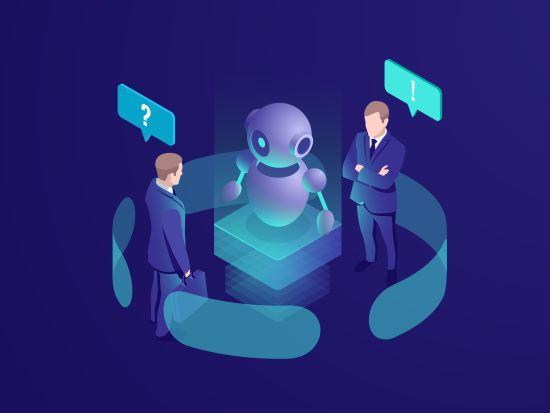
In the ever-evolving world of technology, staying ahead of the curve has become more critical than ever. Today, businesses, irrespective of their size or industry, are racing to embrace the transformative power of Artificial Intelligence (AI) and Machine Learning (ML) in their IT operations. Hence, AI and ML are not just buzzwords anymore; they're the fuel driving the next wave of innovation toward building NextGen IT operations, also referred to as "AIOps." It has the potential to revolutionize the way organizations manage their IT infrastructure, delivering greater efficiency, agility, and cost-effectiveness, and address some critical challenges like:
- Managing large datasets of events/alerts: IT ops are overwhelmed with the flood of data and alerts due to more complex IT environments with disparate data sources (e.g., Infrastructure Log data, ITSM tools, inventory tools, etc.). With the high number of false positives, prioritizing alerts is time-consuming and increases the chances that engineers miss the real alerts.
- Provide faster response with reduced downtime: SLA requirements for IT are increasing before, 96%, then 99.5%, and due to digital transformation imperatives, now users demand 100% availability. Need for predictive maintenance, to monitor in real-time, and any anomalies are flagged before they lead to costly breakdowns.
- Align with Agile working methods: DevOps adoption drives faster release cycles, increasing pressure on ops teams to continually operate and support new releases.
- Increasing Security Risks: Cyber threats are rising, and traditional security measures are insufficient. Need to be able to detect even the most subtle anomalies in network traffic or user behavior, enabling rapid response to potential security breaches.
Get started in the AIOps journey
Embedding AI and ML into IT operations is a complex plug-and-play affair. It involves several key components:
Identifying foundational AIOps use cases: The starting step for any organization in the AIOps journey is identifying core use cases. It's essential to differentiate AIOps from chatbot monitoring tools and focus on use cases that analyze operations data and telemetry to improve IT service delivery and operations. They can be categorized into three:
- Eyes on Glass - Enhanced transparency to IT landscape
- Provide Deep Insights - Transparency translated into actionable root cause analysis.
- Proactive Action - Deep understanding translated into the automated response.
Selecting AIOps tools: Most monitoring tools, like Datadog, Device42, PagerDuty, Big Panda, etc., have built-in features and functionalities like anomaly detection, event correlation, or noise reduction. For enabling AIOps capability, features beyond monitoring, like intelligent remediation capability and integration with other ITSM tools like CMDB, Incident Management, DevOps, etc., are necessary. Strategy and architecture teams are crucial in selecting the right tool for the organization.
Data Management: The foundation of AI and ML is data. Quality data collection, storage, and integration are essential. Without a solid data strategy, the potential of AI and ML remains untapped.
Runbook Automation: Automation processes should be designed, integrated, and tested meticulously to ensure they function as intended and do not disrupt critical operations.
Start of the journey and not the end: Establishing continuous improvement feedback loops to capture and implement improvements is crucial. AI and ML systems should learn and adapt as the IT environment changes.
Challenges and Considerations
Despite the tremendous potential of AI and ML in IT operations, there are challenges and considerations to address before you get started:
- Data Security and Privacy: Safeguarding sensitive data and ensuring compliance with data privacy regulations are paramount.
- Talent and Skills: The need for more AI and ML expertise can be a hurdle. Organizations must invest in training or consider outsourcing.
- Change Management: Employees need to adapt to the new AI-driven environment. Change management strategies are critical to secure a smooth transition.
- Ethical Concerns: Algorithmic bias, transparency, and accountability must be addressed to ensure responsible AI and ML use.
Define and measure the agreed Value / Outcomes
To gauge the effectiveness of AI and ML integration, define key performance indicators (KPIs). These might include metrics like mean time to resolution (MTTR), uptime, and cost savings. A few examples are:
- Enable Self Service by end users with knowledge-backed self-services and an intuitive Product Service Catalog that reduces the demand on IT staff.
- Improve operational efficiency by X%
- AI improves efficiency by reducing tickets and identifying opportunities for process improvements.
- Noise reduction helps shift newly available capacity to proactive event management.
- Reduce downtime by ~X%
- Reduce Incident volume by using event patterns to predict problems and intervene before downtime.
- Resolve incidents faster by starting resolution actions earlier, being more efficient.
Conclusion
Accelerating toward AIOps transformation is necessary for organizations to have reliable and secure Digital Products and Services. Achieving this operational maturity requires upskilling people, redesigning processes, and embedding new technology tools. Organizations ahead in the journey will undoubtedly be the ones to lead the way and help businesses maximize returns on their Digital investments.
Nitesh Sharma is a NEXT100 winner and CTO / Head of IT Advisory at ISSC.
Image Source: Freepik

 In
In
Add new comment